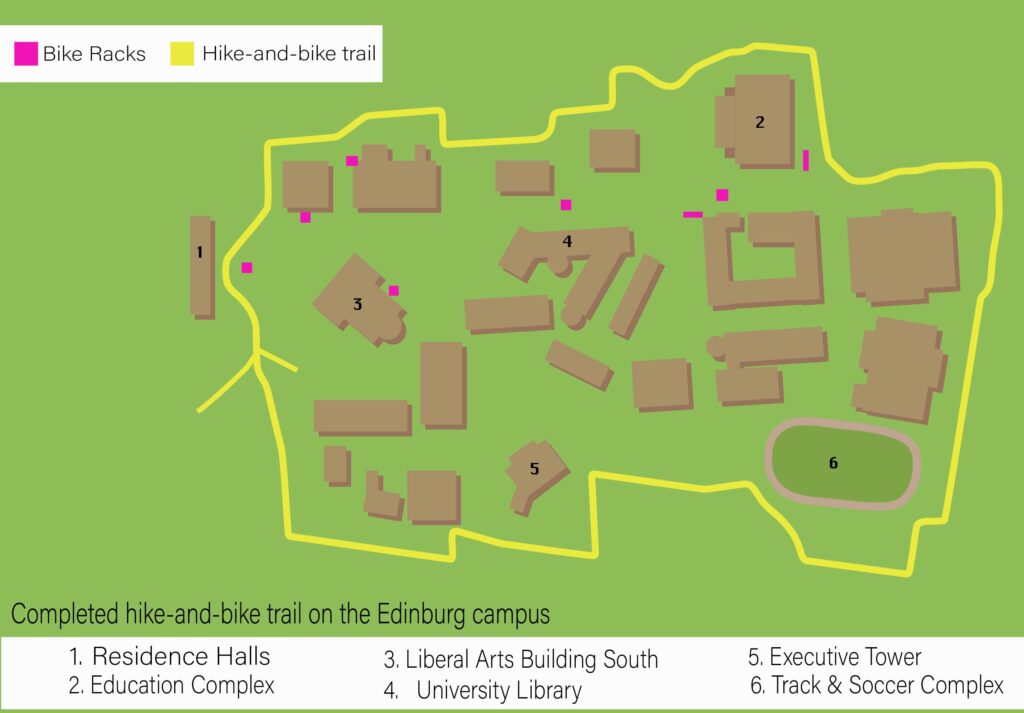Awareness lags as Bronc Trail crowding continues
A hike-and-bike trail introduced on the Edinburg campus to keep personal transportation devices off the student-heavy Bronc Trail has gone unnoticed by many. PTDs include bicycles, scooters and skateboards, among others.

Sofia Cantú Sauceda/THE RIDER GRAPHIC
Computer science junior Ashley Cantu was surprised to learn about the trail when asked about it.
“Wait, so it’s new? I didn’t know it existed,” Cantu replied. “I just don’t see it. Maybe I’m not going to the places where they put it.”
Many students remain unaware of the trail’s existence, despite efforts by the university to enforce PTD restrictions on the Bronc Trail.
The UTRGV Handbook of Operating Procedures states that PTDs are prohibited from use on covered walkways, breezeways and pedestrian bridges on all UTRGV campuses. The policy has been in place since Spring 2020. However, despite the new hike-and-bike trail offering an alternative route, students continue to use the Bronc Trail for convenience.
Kyran Hee, a marketing freshman, said the lack of awareness is a major reason for low usage.
“I barely found out it existed,” Hee said. “I think people that know about it use it, but the people that don’t know about it just ride around wherever they can, like on the Bronc Trail.”
Matthew Moncus, interim director for Environmental Health, Safety & Risk Management, said that while some students are using the new trail, many still default to the Bronc Trail.
“I have seen the [hike-and-bike] trail being used by people on bikes and scooters,” Moncus said. “However, I have still seen students using their scooters and bikes on the Bronc Trail as well. I feel like not everyone understands that the trail is there for them to use.”
He suggested that better communication is needed to encourage students to switch to the bike trail.
“I don’t think the campus has done a great job of advertising it,” Moncus said. “When you actually walk the trail, you can see that there are signs all along it but, if you never get onto the trail in the first place, you’re never going to know it’s there.”
Beyond awareness, Cantu also raised concerns about the hike-and-bike trail’s location.
“Don’t you think it would be at a disadvantage for some people?” she said. “The Bronc Trail is in the center of campus, so it’s just easier to use it to go places.”
Moncus acknowledged that students may view the Bronc Trail as the more direct route but argued the new trail was designed to offer a faster and safer alternative.
“It feels like a shorter distance but, realistically, the time difference is negligible,” he said.
The interim director added if PTD use on the Bronc Trail continues, stricter enforcement may follow.
“What will likely happen is, if we continue to see transportation devices on the Bronc Trail, we will prohibit all of them on campus,” Moncus said. “We have had some injuries. We’ve had employees and students injured by these, and that’s just not acceptable.”





